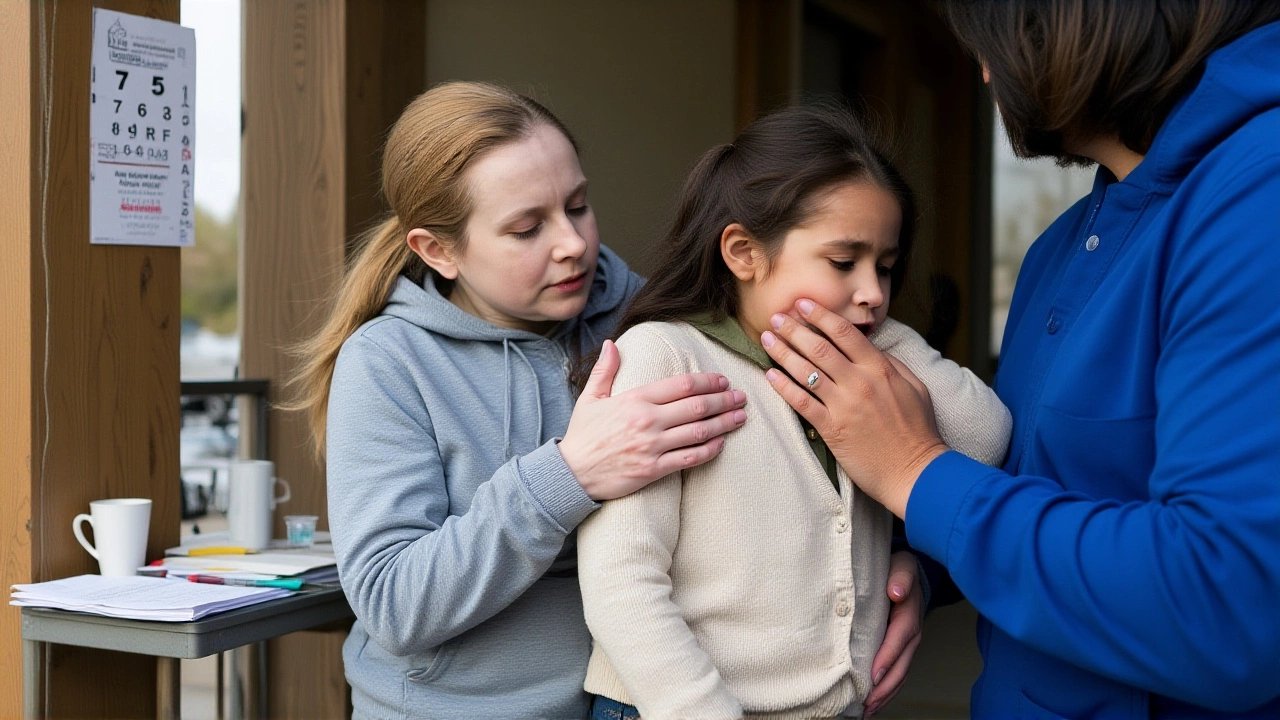Pertussis Surge Hits 25-Year High as Vaccination Rates Plummet

Over 6,600 cases of whooping cough were reported in the first three months of 2025—four times the rate of last year and 25 times higher than 2023—sparking a nationwide public health alarm. The Centers for Disease Control and Prevention (CDC) now projects up to 70,000 cases by year’s end, the highest total since the pertussis vaccine was introduced in 1948. Texas alone recorded more than 3,500 cases by October 2025, after just 1,928 cases all of last year. In Minnesota, 654 cases were confirmed by April, while California, Florida, Oregon, Louisiana, South Dakota, and Idaho are also seeing decade-high spikes. The outbreak isn’t confined to one region—it’s a systemic failure, fueled by collapsing immunity and eroding trust in vaccines.
Why Vaccines Are Falling Behind
Before the pandemic, 95% of U.S. kindergarteners were up to date on the DTaP vaccine. By 2024, that number slipped below 93%, according to data from the New York Academy of Sciences. The drop might seem small, but in public health terms, it’s catastrophic. Herd immunity for pertussis requires at least 92–94% coverage. Below that, outbreaks ignite like dry tinder.
What’s worse, the acellular pertussis vaccine—used since the 1990s—doesn’t last as long as the old whole-cell version. Immunity fades significantly after five to ten years. Teens and adults who were vaccinated as children are now vulnerable. And when they get sick, they often mistake it for a stubborn cold, spreading it unknowingly to infants who haven’t completed their vaccine series.
Meanwhile, nonmedical exemptions have climbed in over 20 states. Social media misinformation, amplified by influencers and politicized debates, has convinced some parents that vaccines are more dangerous than the disease. One mother in Dallas told a local reporter she skipped her toddler’s shots because "a YouTube video said it could cause autism." The CDC has documented dozens of such cases—each one a potential spark.
The Human Cost: Babies at the Center
Infants under one year old are the ones who die from pertussis. Their lungs are too small to handle the violent coughing fits. Their immune systems can’t fight off the Bordetella pertussis bacteria. In 2024, 80% of hospitalizations and all but one of the 10 pertussis-related deaths in the U.S. were in babies under six months.
That’s why health officials now focus on protecting newborns through maternal vaccination. When a pregnant woman gets the Tdap shot between 27 and 36 weeks, her body produces antibodies that cross the placenta—giving the baby passive protection until they’re old enough for their first shot at two months.
But here’s the problem: only 67% of pregnant women received Tdap in 2024, according to CDC data. That’s up from 61% in 2020, but still far short of the 80% target. "We’re playing Russian roulette with newborns," said Dr. Huang, a Dallas County health official. "We’ve got the tool. We just can’t get it into the right hands."

The Fear Factor: Immigration and the Vaccination Gap
Dallas County is nearly 40% Hispanic. And Dr. Huang believes fear of Immigration and Customs Enforcement (ICE) is keeping families away from clinics. "Normally, during back-to-school season, our whole front downstairs area is packed," he said. "We did not see that this year."
Health workers report mothers skipping appointments because they’re afraid of being asked for documentation. Some have been turned away at clinics after showing up with out-of-state IDs. Others heard rumors that getting a vaccine could trigger an immigration check. "We’ve lost trust," said Maria Lopez, a community health worker in El Paso. "People used to line up. Now they wait until their baby is wheezing before they come."
The CDC has acknowledged that "structural barriers," including immigration enforcement anxiety, are contributing to lower immunization rates in minority communities. But no federal program has been launched to address it directly.
What’s Being Done—and What’s Not
The Texas Department of State Health Services issued a health alert in May 2025, urging hospitals to screen for pertussis in all infants with prolonged coughs. They’ve distributed educational pamphlets and boosted lab testing. But they haven’t opened mobile clinics in neighborhoods where fear is highest.
California and Oregon have launched community outreach programs, partnering with churches, food banks, and immigrant legal aid groups to offer free vaccines without asking for ID. So far, those efforts have increased uptake by 12–18% in targeted ZIP codes. But they’re small-scale. Nationwide, funding for such programs has been cut by 23% since 2020.
Meanwhile, the CDC’s surveillance system is still lagging. Many cases go unreported because doctors don’t test for pertussis unless the patient is hospitalized. And with staffing shortages in public health departments, contact tracing is often delayed by weeks—long after the virus has spread.

What Comes Next
Scientists are already working on a new pertussis vaccine—one that lasts longer and triggers stronger immunity. But it’s still in Phase 2 trials. It won’t be available before 2028.
Until then, the only shield is the one we already have: vaccines. And the only way to protect the most vulnerable is to make sure everyone around them is protected too.
That means:
- Pregnant women: Get Tdap during every pregnancy, 27–36 weeks.
- Parents and caregivers: Get a Tdap booster if you haven’t had one in the last 10 years.
- Teens: Make sure you got your 11-year-old Tdap shot.
- Grandparents: If you’re around a newborn, get vaccinated—even if you think you’re "too old" for it.
It’s not complicated. It’s just not happening.
Frequently Asked Questions
Why are infants dying from whooping cough when vaccines exist?
Infants under two months can’t yet receive the DTaP vaccine, leaving them defenseless. They rely on "cocooning"—vaccinated caregivers around them—to avoid exposure. But with vaccination rates dropping and immunity fading, that safety net is breaking. In 2024, 80% of pertussis hospitalizations were in babies under six months, and all but one death occurred in this group.
Is the current pertussis vaccine ineffective?
No—it’s effective at preventing severe disease, but its protection fades faster than the old version. The acellular vaccine (DTaP/Tdap), introduced in the 1990s, reduces side effects but offers only 70–90% protection that wanes after five years. That’s why teens and adults are now getting sick and spreading it. Boosters every 10 years are critical, but most people never get them.
How is immigration enforcement affecting vaccination rates?
In counties with large immigrant populations—like Dallas, El Paso, and Los Angeles—fear of ICE is deterring families from seeking care. Some clinics ask for ID or insurance, creating barriers. Even when vaccines are free, the stigma of being questioned about documentation keeps parents away. Community health workers report a 20–30% drop in childhood immunizations among Hispanic families since 2020, directly correlating with increased ICE activity.
Why aren’t more states offering free, no-ID vaccines?
Funding and political will are the main barriers. While states like California and Oregon have piloted mobile clinics in high-risk neighborhoods, most lack the budget or legislative support to scale. Federal grants for immunization outreach have declined by 23% since 2020, and many local health departments are still recovering from pandemic staffing cuts. Without dedicated resources, fear and misinformation win.
When will a better pertussis vaccine be available?
Researchers at the National Institutes of Health and several biotech firms are testing next-generation pertussis vaccines designed to last 15–20 years and trigger stronger immune memory. One candidate, VaxBio-2025, showed promising results in Phase 2 trials in early 2025. But even if approved in 2027, manufacturing and distribution could take another two years. For now, the old vaccine is still our best tool—if we use it.
Can adults get whooping cough even if they were vaccinated as kids?
Absolutely. The acellular vaccine’s protection fades after five to ten years. Many adults mistake pertussis for a lingering cold or bronchitis. They don’t get tested, so they don’t know they’re spreading it. That’s why the CDC recommends a Tdap booster every 10 years—and especially for anyone who’ll be near a newborn. If you’re unsure when you last got it, get one now. It’s safe, free at most clinics, and could save a baby’s life.
